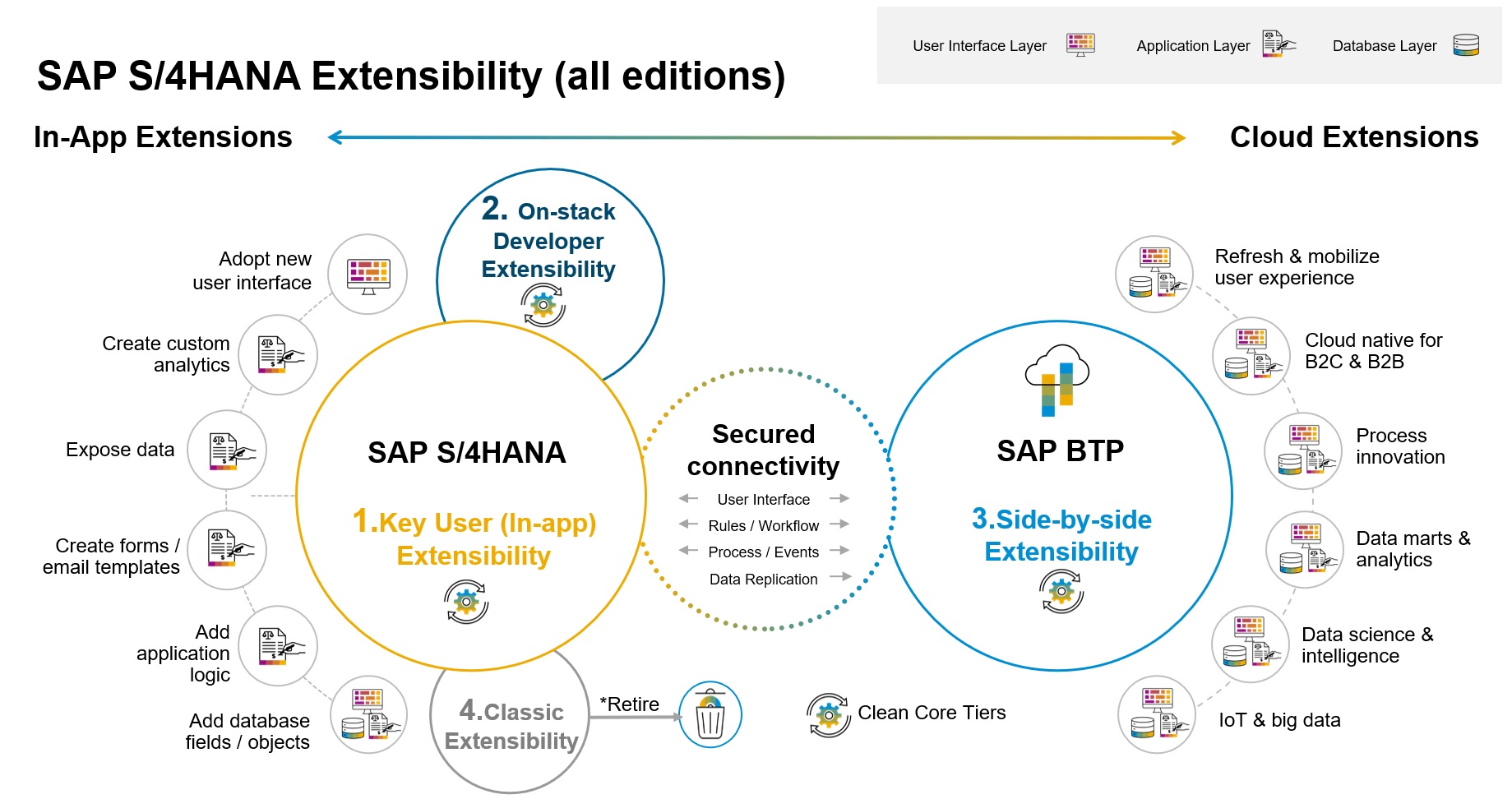 Anthony Cecchini is the President and CTO of Information Technology Partners (ITP), an ERP technology consulting company headquartered now in Virginia, with offices in Herndon. ITP offers comprehensive planning, resource allocation, implementation, upgrade, and training assistance to companies. Anthony has over 20 years of experience in SAP business process analysis and SAP systems integration. ITP is a Silver Partner with SAP, as well as an Appian, Pegasystems, and UIPath Low-code and RPA Value Added Service Partner. You can reach him at [email protected].
Anthony Cecchini is the President and CTO of Information Technology Partners (ITP), an ERP technology consulting company headquartered now in Virginia, with offices in Herndon. ITP offers comprehensive planning, resource allocation, implementation, upgrade, and training assistance to companies. Anthony has over 20 years of experience in SAP business process analysis and SAP systems integration. ITP is a Silver Partner with SAP, as well as an Appian, Pegasystems, and UIPath Low-code and RPA Value Added Service Partner. You can reach him at [email protected].
As the SAP ERP Version ECC approaches its sunset in 2027, businesses are facing a critical crossroads. The transformation to SAP’s latest release, S/4HANA, presents not only a technological upgrade but also a unique opportunity for a comprehensive business transformation, especially in the area of integration for SAP S4HANA. In this blog post, we delve deeper into why an S/4HANA project should be viewed as a catalyst for business transformation and how organizations can harness its full potential to drive growth, innovation, and operational excellence.
SAP’s S/4HANA brings a multitude of advantages to the table, making it a compelling choice for businesses looking to future-proof their operations. The most significant difference lies in its underlying database, as S/4HANA employs the in-memory SAP HANA database, which offers faster data processing, real-time analytics, and improved performance.
Additionally, S/4HANA incorporates modern technologies such as cloud computing, social media integration, mobility, and in-memory computing. These technological advancements enable businesses to streamline their workflows, enhance decision-making, and stay competitive in today’s rapidly changing market landscape.
While technology upgrades are undoubtedly essential, the true power of S/4HANA lies in its ability to drive business process improvements. Many organizations struggle with the complexity of their existing ECC systems, which have accumulated customization and modifications over the years to meet specific needs. Unfortunately, this complexity often hinders agility and impedes businesses from responding swiftly to market dynamics.
By migrating to S/4HANA, organizations have the opportunity to reevaluate and optimize their business processes. Embracing standardization and flexibility, organizations can achieve seamless end-to-end processes, eliminate redundancies, and foster collaboration across departments. This holistic approach not only improves operational efficiency but also sets the stage for future innovation and growth.
Every industry has unique requirements and processes that demand specialized solutions. SAP recognized this need and launched its Industry Cloud program, offering industry-specific capabilities through cloud-based solutions. From automotive to retail, engineering to utilities, these industry-specific cloud solutions empower businesses to meet their specific challenges head-on.
By leveraging Integration for SAP S4HANA capabilities and Industry Cloud solutions, businesses gain a competitive edge by aligning their systems with industry best practices and staying ahead in their respective markets.
The concept of the Intelligent Enterprise has gained prominence in recent years. It revolves around creating an integrated business environment that breaks down data silos, optimizes technology landscapes, and fosters seamless processes. S/4HANA serves as a key enabler of this vision, helping organizations transition from disparate and fragmented systems to a cohesive and interconnected ecosystem.
The Intelligent Enterprise approach leads to improved decision-making, real-time insights, and streamlined operations. Business leaders gain greater visibility into their operations, enabling them to make data-driven decisions with confidence. Moreover, this integration-driven environment fosters a culture of innovation, empowering teams to adapt to market changes swiftly and stay ahead of the competition.
In the past, SAP customers could extensively extend their systems and add many of their own functionalities. Now with the mantra of a “Clean Core Philosophy”, the extensibility of SAP S/4HANA should mainly take place in SAP BTP and is supported by a software development kit (SAP Cloud SDK). This is especially true for decoupled extension scenarios
As organizations embark on their S/4HANA journey, integration for SAP S4HANA becomes a critical aspect to address. The transformation necessitates the integration of existing systems, processes, and data to ensure a seamless transition. To overcome integration challenges, SAP provides the Integration Solution Advisory Methodology (ISA-M).
ISA-M offers a comprehensive approach to managing the complexity of integration for SAP S4HANA in cloud and hybrid landscapes. It includes predefined integration patterns, architectural blueprints, and best practices, enabling organizations to simplify integration efforts and accelerate project delivery.
S/4HANA introduces several new integration and technologies that enhance interoperability and collaboration. Alongside traditional integration methods like RFC, BAPI, and ALE IDOC, SAP is promoting the use of APIs, Business Events, and CDS Views. Extensions can be divided into in-app extensibility and side-by-side extensibility. In-app extensions takes place within the system itself and include objects such as:
- Key User extensibility covers the adjustments in regard to the customization of the user interfaces (show/hide/arrange), creation of custom fields, custom logic to a certain extend and the creation of forms and reports
- Classic extensibility which can be seen as the typical adjustments also done in an on-premise SAP R3 world and cover the customization of User Exits, BADIS etc.
More extensive developments, such as completely new user interfaces and the creation of own APPs, as well as the integration to other SAP or NON-SAP applications and systems takes place as side-by-side enhancements in SAP BTP.
APIs allow for seamless communication between systems, facilitating the creation of custom applications and enabling integration with other SAP or non-SAP systems. Business Events enable businesses to trigger and process events within SAP applications, allowing for smoother event-driven processes. CDS Views provide access to SAP systems based on the SAP HANA database, enabling external applications to access specific data efficiently.
For SAP innovation is key. Opening the world of SAP integration for SAP S4HANA to open-standards is giving customers the opportunity to seamlessly integrate new technologies such as APIs, IoT scenarios, and data-analytics. SAP has attempted to address these with the use of their Iteration and Extension Suite Services. Please read the following blogs to get an overview of each respectively:
SAP Integration Suite – AN Overview
SAP Extension Suite – An Overview
Summary
An S/4HANA project should not be seen merely as a technology upgrade but as a transformative journey that propels businesses toward a more intelligent, integrated, and innovative future. Embracing S/4HANA unlocks new horizons for businesses to optimize processes, drive industry-specific solutions, and foster a culture of continuous innovation. With careful planning, strategic alignment, and a focus on business process improvements, organizations can harness the full potential of S/4HANA and unlock unprecedented value for their stakeholders. The time to embark on this transformative journey is now.





